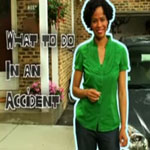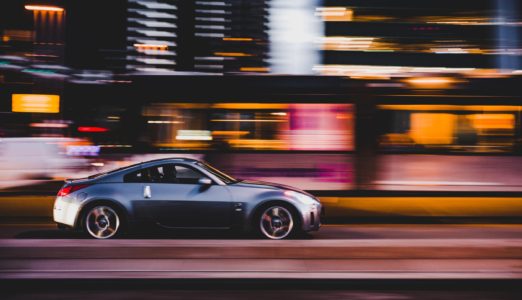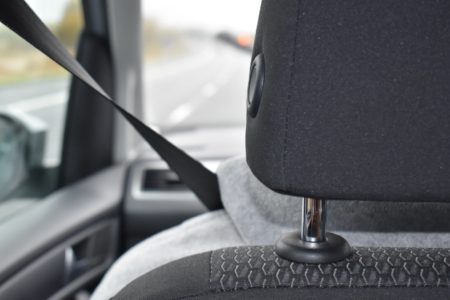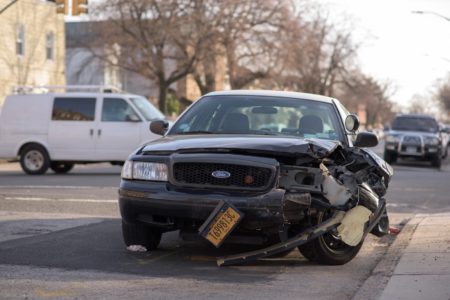Learn to Drive | What to Do After a Car Crash
When you learn how to drive a car the first year of driving a car is the most dangerous. Statistics show that many teens have a car crash during their first year of driving a car and that many teens die from these crashes. Handling the experience of a car crash is critical. Learning to drive a car includes learning what to do if you are ever in a crash.
A car crash can cause minor or serious injuries and you can also incur damages to your car, to other cars or to other property. The most important thing to remember at a car crash is the safety of yourself and others.
Stay Calm
Since you are just learning how to drive a car you will be very “stressed out” from having a car crash aka fender-bender. Neither you nor the other driver wanted such an accident to happen. But the stress of the situation may cause the other driver to become emotional and start yelling and accusing you of causing the crash. If the other driver is older and knows you are just learning how to drive a car they may try to intimidate you. Do not lose your cool! Stay calm and collected. This will help you think clearly on what needs to be done to keep the situation safe for everyone. Do not tell the other driver you are responsible for the crash as you may not be thinking clearly and may not be responsible. Do not tell the other driver they are responsible for the crash as this may cause greater emotional distress. Take care to do the most important things first. Follow the steps below. As part of your “Learning How to Drive a Car Checklist” test yourself to see if you remember what is necessary at a crash.
Watch for Other Vehicles
The stress of the car crash may also impair your judgement. You must remember there are other cars going around the crash so you are in a very dangerous situation. If you are walking around your car looking at the damage be aware of the traffic around you. If you move your car to the side of the road do so very cautiously. Remember that since you are just learning to drive a car you do not have the experience to readily detect dangerous situations so take extra caution.
Clear the Road and Signal a Problem

If no one has serious injuries and if the cars can be driven put on your 4-way flashing lights and drive your vehicle off the road to a safe spot. If the cars are inoperable put on your 4-way flashing lights. If you have a flare walk 3 or more car lengths away from the crash, towards on-coming traffic, to ignite it and place on the road. Do not light the flare near the cars as gasoline may have spilled during the crash and could ignite. Call 911 or other emergency agencies for help. If possible stand as far off the road as possible when you are calling for help and when you are waiting for help to arrive. Do not get back in your car.
Decide if Police are Required
Not every car crash requires the police to be called. However if one or more of the following conditions exist it is recommended you call the police. There is nothing wrong with calling the police if you feel unsafe. If you are a teenage girl riding alone in your car and you have a crash, call the police and explain you are alone in the car and do not feel safe. Stay in the car until the police arrives.
Call the police if:
- someone is hurt ( if it is serious tell the 911 operator you need an ambulance)
- one of the cars cannot be driven (advise the police that a tow truck(s) will be needed)
- you suspect the other driver is impaired (make this call in private to not provoke the other driver)
- the other driver does not share their information
- the other driver insists the police be called ( you need to stay until the police arrive – even if the crash is minor)
In some areas if the damage is greater than a certain dollar amount you are to call the police. Check with your state or provincial driving regulations so you know what the amount is. Part of your learning how to drive a car curriculum should cover estimating what damage amounts look like.
If the police are called they will interview both drivers. They may advise who is being charged with causing the crash. Be sure to get the officer’s name and badge number so you can give this to the insurance company when you contact them. Ask the police officer if they will be writing a report of the incident and advise the insurance company.
Share Information
After any crash you must share the following information with the other driver.
- driver’s name, address, contact information,
- driver’s license number
- insurance company, policy number and a phone number to call
- the car make, model, color, license plate number
- approximate time and place (address) of the crash
- a description of what happened
Take photos of the car damage with your phone or camera. If no camera is available write down what you see and perhaps a little diagram. The stress of the situation may easily cause you to forget so photograph the damage and write down a description. If there are any witnesses, get their contact information.
All of this information will be crucial in the event there will be a dispute in who is to be blamed for the accident. Remember to never take responsibility for the mishap. Since you are just learning how to drive a car you will be unfairly thought of as the one who made a mistake and caused the crash. Sadly in many cases this will be true but if you did nothing wrong you will need to be deligent and not make any mistakes after the crash happens.
Handy Items to Carry in Your Car
Hopefully you will never need to handle a crash situation where you are involved. But it is wise to be prepared. You may also need to help someone else one day. Here are the items which will be useful after a crash.
- a cell phone
- a camera (you probably have one in your cell phone)
- a pen and paper (your cell phone may do texting)
- car insurance certificate (you need to have this at all times)
- accident forms (the book “3 Keys to Keeping Your Teen Alive” has a template in the appendix)
- first aid kit (this is handy for any situation)
- emergency lights or flares (this is handy if you have a breakdown)
- flashlight (this is handy for a lot of situations … like changing a tire at night)
- medical insurance papers
- donor card (sign your donor car…d in the event you are killed your organs may save a life)
Getting Home
If the cars need to be towed the police will probably be called. The police will be able to tell you where your car will be towed to. The police may also be able to give you a ride home or a ride to where you can arrange transportation home.
If both drivers agree and the police was not called you can both continue on your way after you share your information.
Contact your insurance company as soon as possible and give them the information on the other driver and the crash. They will advise how to proceed if you need to have damage repaired.





One thought on “How to Drive a Car | What to Do After a Car Crash”
Thanks. I hope people will pay attention and learn how to reduce crashes and injuries. In the event that a crash is unavoidable, it helps to know your rights and what to do.